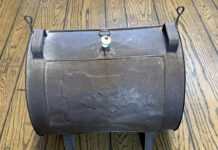A recent article and data in the Buckeye Dairy News (Department of Animal Sciences, Ohio State University, March 2004), is worthy of further comment.
The article, Economics of Dairy Production in Ohio, by Dr. Donald Breece, Ohio State agriculture and natural resources specialist in farm management (http://dairy.osu.edu/bdnews/bdnews.html), compares data from Ohio dairy farms to the financial performance of 349 Minnesota dairy farms.
In his words. According to Breece, “Analysis of dairy enterprises found in the Ohio Farm Business Summary reveals feed cost as the No. 1 reason for the difference in profitability of Ohio dairy farms.
“In the past seven years, the feed cost per hundredweight of milk sold has averaged about $2.20 difference between the lowest and highest profit third of producers participating in the summary.
“At 19,970 pounds of milk sold (2002 DHIA average), that would suggest a difference of $433 in net return per cow.”
Goal. “An attainable goal is $6.50 feed cost per hundredweight of milk produced, including purchased feed and the value of homegrown feed. About a third of this feed cost is used for raising the replacement heifer.
“When feed cost per hundredweight of milk is too high, often it is found that the cost of raising replacements is out of line.
“Therefore, separate enterprise analysis of the replacement herd would assist producers in identifying problems.”
FINPACK. “The Ohio Farm Business Summary reports data from Ohio farms using the FINPACK computer program FINAN for year-end analysis.
“The summary is published by Ohio State University Extension. Participation in this summary is voluntary through educational programs offered by Ohio State University Extension and several Farm Business Planning and Analysis programs.
“The whole farm analysis is sorted by net farm income. Enterprise data are sorted by return to overhead.”
For this analysis, homegrown feed is valued at the opportunity cost, which is the cost of using a resource in one way based on the return that could be obtained from using it in the best alternative way.
For example, feeding shelled corn that could otherwise be sold for an average of $2.24 per bushel (2002). (See table)
Difficult year. As I recall, 2002 was a very difficult year for dairy producers, not only because of the severe drought in northeast Ohio, but also because of milk prices that averaged less than $13.
However, despite these problems, the Ohio herds in the summary were able to return $261 per cow over total costs.
In fact, the high-profit Ohio herds averaged $6.07 total feed costs per hundredweight and had a net return of $665 per cow over total costs.
Encouragement. I do not know if these herds represent an average of all Ohio herds, or above-average herds.
But I am encouraged that a number of herds were able to be reasonably profitable under very difficult circumstances.
I am encouraged because many producers have shown they can produce milk for around $6.50 per hundredweight of milk or less.
If you are good enough to do that, you are good enough to control your other costs, which means you have good prospects for profitability through low price swings.
I agree with Breece’s analysis of the causes of higher-than-average feed costs.
Getting help. If you have trouble assigning costs to the heifer-raising enterprise, I would be happy to help you do an analysis of the whole herd and the heifer enterprise.
Please feel free to call me or your local county extension agent for more information.
(The author is an agricultural extension agent in Columbiana County. Questions or comments can be sent in care of Farm and Dairy, P.O. Box 38, Salem, OH 44460.)
Get 4 Weeks of Farm and Dairy Home Delivered












